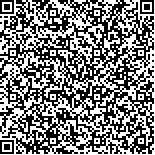| 引用本文: | 袁茂华,陶静,高必兴,孙杰玉,康点点,陈文莉,古锐,蒋桂华*.不同基原、性状藏药佐摸兴对热毒血瘀证模型大鼠的影响[J].中国现代应用药学,2024,41(5):599-605. |
| YUAN Maohua,TAO Jing,GAO Bixing,SUN Jieyu,KANG Diandian,CHEN Wenli,GU Rui,JIANG Guihua*.Effect of Tibetan Medicine Zuomaoxing with Different Origins and Characteristics on Rats with Pattern of Toxic Heat-induced Blood Stasis[J].Chin J Mod Appl Pharm(中国现代应用药学),2024,41(5):599-605. |
|
| |
|
|
| 本文已被:浏览 554次 下载 345次 |

码上扫一扫! |
|
|
| 不同基原、性状藏药佐摸兴对热毒血瘀证模型大鼠的影响 |
|
袁茂华1,2, 陶静1, 高必兴1,3, 孙杰玉1, 康点点1, 陈文莉1, 古锐1, 蒋桂华*1
|
|
1.成都中医药大学药学院,西南特色中药资源国家重点实验室,成都 611137;2.乐山市食品药品检验检测中心,四川省药品监督管理局中药质量研究重点实验室,乐山 614000;3.四川省药品检验研究院,国家药品监督管理局中成药质量评价重点实验室,成都 611731
|
|
| 摘要: |
| 目的 探讨3种不同基原和同一基原不同性状藏药佐摸兴[昌都锦鸡儿Caragana changduenais Liou f.红色心材、鬼箭锦鸡儿 Caragana jubata(Pall.) Poir.棕色和白色心材]药材对热毒血瘀证大鼠的影响。方法 90只SD大鼠随机分9组[空白组,模型组,阿司匹林阳性组,昌都锦鸡儿高、低剂量组,鬼箭锦鸡儿棕色心材高、低剂量组,鬼箭锦鸡儿白色心材高、低剂量组],采用脂多糖联合角叉菜胶溶液制备热毒血瘀证大鼠模型,检测各组热毒血瘀证模型大鼠的血液流变学、凝血四项、血常规,采用ELISA法检测花生四烯酸(arachidonic acid,AA)、白介素-1β(IL-1β)、白介素-6(IL-6)、肿瘤坏死因子-α(TNF-α)、血栓素B2(thromboxane B2,TXB2)的含量。结果 ①血液流变学:与模型组相比,昌都锦鸡儿显著降低大鼠全血黏度、全血还原黏度、红细胞刚性指数、红细胞变形指数、全血相对指数(P<0.01),升高血浆黏度(P<0.01);鬼箭锦鸡儿棕色心材能显著降低红细胞刚性指数(P<0.05或P<0.01),升高血浆黏度(P<0.01);鬼箭锦鸡儿白色心材能显著降低全血高切黏度、全血高切还原黏度、红细胞刚性指数、红细胞变形指数、全血高切相对指数(P<0.01)。②凝血四项:与模型组相比,昌都锦鸡儿低剂量组凝血酶时间显著降低(P<0.01),鬼箭锦鸡儿棕色高剂量组活化部分凝血活酶时间、凝血酶时间显著降低(P<0.01或P<0.05);鬼箭白色低剂量组凝血酶原时间、活化部分凝血活酶时间显著降低(P<0.01或P<0.05)。③血常规:与模型组相比,鬼箭锦鸡儿棕色低剂量组和鬼箭白色低剂量组单核细胞百分比下降(P<0.05或P<0.01);昌都锦鸡儿低剂量组大血小板数目显著增加(P<0.05);昌都锦鸡儿高剂量组大鼠血小板数目、血小板压积、大血小板数目显著增加(P<0.05或P<0.01),趋于正常大鼠。④炎症因子:与模型组相比,昌都锦鸡儿组TNF-α、IL-6、TXB2显著升高(P<0.01)。鬼箭锦鸡儿棕色心材组IL-6、TXB2显著升高(P<0.01或P<0.05)。鬼箭锦鸡儿白色心材低剂量组TXB2显著升高(P<0.01);鬼箭锦鸡儿白色心材高剂量组IL-1β、IL-6、TXB2显著升高(P<0.01),AA显著降低(P<0.05)。结论 不同基原、不同性状的佐摸兴药材对热毒血瘀证大鼠有不同程度的活血化瘀作用,对血液流变学、凝血因子、血常规、炎症介质均有不同程度的影响,且剂量不同影响程度和作用趋势不同。活血化瘀作用总体表现为昌都锦鸡儿>鬼箭锦鸡儿白色心材>鬼箭锦鸡儿棕色心材。其活血化瘀作用可能是多种途径和机制综合作用的结果。 |
| 关键词: 佐摸兴 昌都锦鸡儿 鬼箭锦鸡儿 热毒血瘀 血液流变 凝血 炎症因子 |
| DOI:10.13748/j.cnki.issn1007-7693.20233708 |
| 分类号:R285.5 |
| 基金项目:国家重点研发计划项目(2019YFC1712302, 2019YFC1712305) |
|
| Effect of Tibetan Medicine Zuomaoxing with Different Origins and Characteristics on Rats with Pattern of Toxic Heat-induced Blood Stasis |
|
YUAN Maohua1,2, TAO Jing1, GAO Bixing1,3, SUN Jieyu1, KANG Diandian1, CHEN Wenli1, GU Rui1, JIANG Guihua*1
|
|
1.State Key Laboratory of Southwestern Chinese Medicine Resources, School of Pharmacy, Chengdu University of TCM, Chengdu 611137, China;2.The Key Laboratory of Traditional Chinese Medicine Quality Research of Sichuan Provincial Drug Administration, Leshan Food and Drug Inspection and Testing Center, Leshan 614000, China;3.Sichuan Institute for Drug Control, Key Laboratory of Quality Evaluation of Chinese Patent Medicines, NMPA, Chengdu 611731, China
|
| Abstract: |
| OBJECTIVE To investigate the effects of 3 different primitives or the same primitives with different characters of Tibetan medicine Zuomoxing[Caragana changduenais Liou f. with red heartwood, Caragana jubata(Pall.) Poir. with brown and white heartwood] on rats with pattern of toxic heat-induced blood stasis. METHODS Ninety SD rats were randomly divided into the blank group, model group, aspirin-positive group, Changdu low-dose group(CDD), Changdu high-dose group(CDG), whitewood of Guijian low-dose group(GJBD), whitewood of Guijian high-dose group(GJBG), brown wood of Guijian low-dose group(GJZD), Brown wood of Guijian high-dose group(GJZG). Models with heat toxicity and blood stasis pattern were established by intraabdominal injection of carrageenan combined with tail vein injection of lipopolysaccharide. The effects of each group on blood rheology, coagulation four indices and blood routine were determined, and the content of arachidonic acid(AA), IL-1β, IL-6, TNF-α and thromboxane B2(TXB2) were measured with ELISA. RESULTS ①Blood rheology: Compared with model group, CDD and CDG significantly decreased whole blood viscosity(WBV), reduction viscosity of whole blood(WBRV), erythrocyte rigidity index(HGX), erythrocyte deformability index(EDI), whole blood relative index(WBRI) (P<0.01), and increased plasma viscosity(P<0.01). GJZG and GJZD significantly decreased HGX(P<0.01 or P<0.05), and increased plasma viscosity(P<0.01). GJBG and GJBG significantly decreased WBHSV, WBHSRV, HGX, EDI, and whole blood high shear relative index(WBHSRI)(P<0.01). ②Coagulation four indices: Compared with model group, CDD significantly reduced the thrombin time(TT)(P<0.01). GJZG significantly reduced activated partial thromboplastin time(APTT) and TT(P<0.01 or P<0.05). GJBD significantly reduced prothrombin time(PT) and APTT (P<0.01 or P<0.05). ③Blood routine: Compared with model group, GJZD and GJBD significantly decreased the percentage of monocytes(P<0.01 or P<0.05). The number of large platelets in CDD significantly increased(P<0.05). CDG significantly increased the platelet number, platelet hematocrit, and large platelet number(P<0.01 or P<0.05), and tended which to be normal. ④Inflammatory factors: Compared with model group, the levels of TNF-α, IL-6, TXB2 were significantly increased in CDD and CDG(P<0.01 or P<0.05). The levels of IL-6 and TXB2 were significantly increased in GJZD and GJZG(P<0.01). GJBD was significantly increased TXB2(P<0.01), and GJBG was significantly increased IL-1β, IL-6, and TXB2(P<0.01), while decreased AA(P<0.05). CONCLUSION Zuomoxing with separate sources have different degrees of effects on rats with pattern of toxic heat-induced blood stasis, and have different degrees of effects on hemorheology, coagulation factors, blood routine and inflammatory mediators, and the degree and trend of effects are different with different doses. The effect of promoting blood circulation and removing blood stasis was generally manifested as Changdu > whitewood of Guijian > Brown wood of Guijian. The effect of promoting blood circulation and removing blood stasis may be the result of multiple pathways and mechanisms. |
| Key words: Zuomoxing Caragana changduenais Liou f. Caragana jubata(Pall.) Poir. toxic heat-induced blood stasis blood rheology coagulation inflammatory factors |
|
|
|
|
